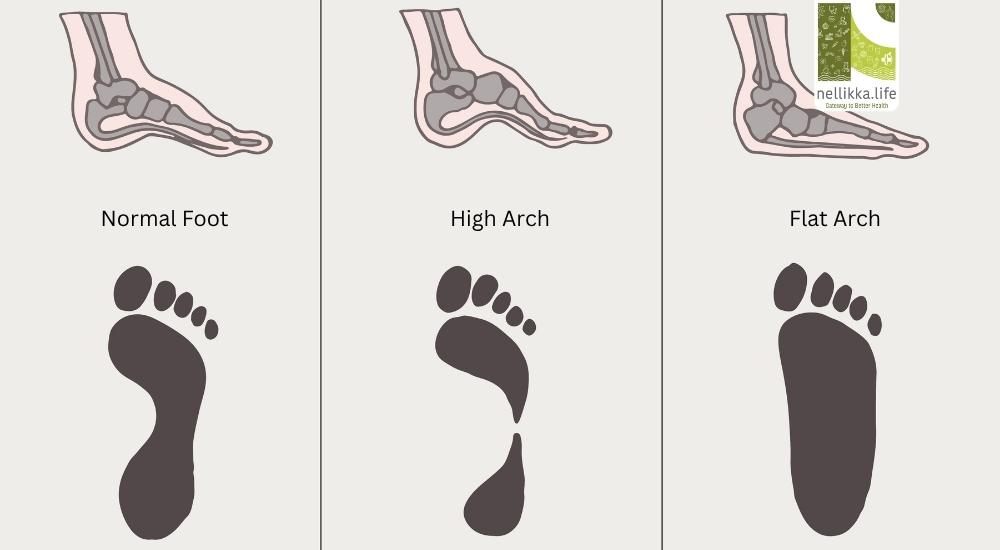Goldilocks Foot: Striking the Perfect Balance for Healthy Movement

Ever heard of the “Goldilocks Foot”?
Inspired by the classic fairy tale, the concept of the Goldilocks Foot revolves around finding the “just right” balance in foot structure and function—not too flat, not too high, but optimal for walking, running, and everyday activity.
In a world where foot problems like flat feet and high arches are increasingly common, understanding the anatomy and biomechanics of the foot can help us prevent injuries, improve posture, and enhance overall movement efficiency.
What Is the Goldilocks Foot?
The term “Goldilocks Foot” was coined by researchers to describe a foot that is neither over-pronated (flat) nor over-supinated (high arch)—but rather has an ideal arch height and pressure distribution.
According to a 2019 study published in the Journal of the Royal Society Interface, Goldilocks feet are bio-mechanically efficient, offering the best compromise between shock absorption and propulsion. These feet tend to:
- Distribute pressure evenly
- Absorb impact effectively
- Provide good leverage during push-off
- Reduce the risk of injury during physical activity
The Anatomy Behind It
The human foot is made up of 26 bones, 33 joints, and over 100 muscles, tendons, and ligaments. Its three main arches—medial, lateral, and transverse—play key roles in:
- Shock absorption
- Weight bearing
- Balance and propulsion
A “Goldilocks Foot” exhibits a medium arch height that allows optimal flexibility and stability. This balance prevents excessive stress on the ankles, knees, hips, and lower back.
Why Foot Structure Matters
Foot type directly influences how we move. Here’s a comparison:
| Foot Type | Common Issues |
| Flat Foot (Overpronation) | Heel pain, shin splints, knee pain |
| High Arch (Oversupination) | Ankle sprains, plantar fasciitis, poor shock absorption |
| Goldilocks Foot | Lower injury risk, better performance, balanced gait |
A 2021 review in the Foot & Ankle Clinics journal confirmed that improper arch height leads to altered biomechanics and increased injury risk, particularly in runners and athletes.
Reference: Foot and Ankle Clinics, 2021
How Do You Know If You Have a Goldilocks Foot?
You can do a simple wet footprint test at home:
- Wet your foot.
- Step onto a sheet of paper or tiled floor.
- Observe the print:
- Full imprint = flat foot
- Thin outer curve only = high arch
- Balanced curve = Goldilocks foot
You can also consult a podiatrist or orthotist for a gait analysis and arch assessment.
Benefits of Having a Goldilocks Foot
- Reduced risk of common injuries like plantar fasciitis or Achilles tendonitis
- Better energy return in each step
- Improved posture and spinal alignment
- Enhanced performance in sports and daily activities
Can You Develop a Goldilocks Foot?
Yes—to some extent! While genetics determine the base structure of your foot, certain practices can improve alignment and function:
- Wear shoes with proper arch support (avoid overly cushioned or overly flat footwear)
- Practice balance and foot-strengthening exercises (e.g., towel curls, toe yoga)
- Avoid walking barefoot on hard surfaces for prolonged periods
- Use orthotic insoles if prescribed
Just like Goldilocks found the porridge that was just right, our feet too thrive when balanced—not too rigid, not too flat. The Goldilocks Foot isn’t just a fairy tale concept—it’s a scientifically backed bio-mechanical ideal that supports healthier movement and a lower risk of injury.
Whether you’re a runner, a walker, or someone who just wants to stand pain-free—understanding your foot type is a key step toward better overall health.




